
My Kombucha’s Not Bubbly?
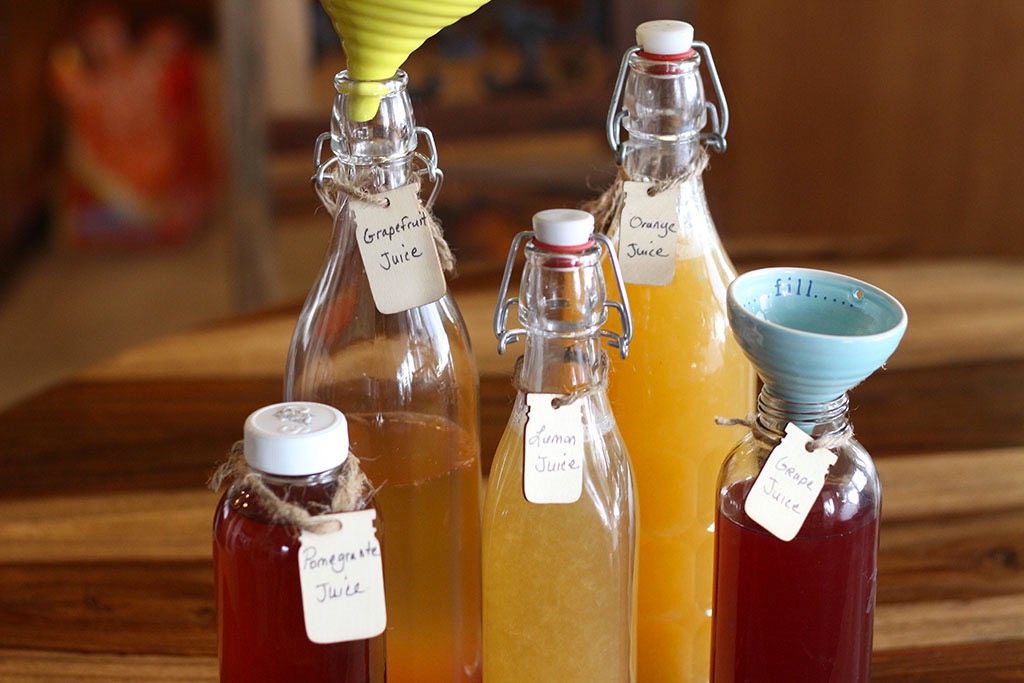 Bubbly, fizzy kombucha is one of my favorite things. Understanding the science behind how it works can help you create the carbonation that most people are looking for.
Bubbly, fizzy kombucha is one of my favorite things. Understanding the science behind how it works can help you create the carbonation that most people are looking for.
Making Kombucha
Let me explain to you how it all works. When making kombucha, the fermenting tea will form a SCOBY on top. It will be the size of the opening of your jar. It forms a seal, and this will let the yeasts in the kombucha seal in the naturally-occurring carbonation. Then the yeasts will begin to consume the sugar in the tea, and the by-product of this is a natural carbonation. Just as yeast makes bread rise, the good yeasts in kombucha make your tea bubbly. One certain probiotic yeast found in kombucha is called Saccharomyces boulardii. It is the number one probiotic used in hospitals, called Florastor. It is abundant in kombucha, and believe me when I tell you that you need this in your body. It helps a myriad of processes. There are good yeasts and bacteria in kombucha; and while most say it's a symbiotic culture of bacteria and yeasts, this isn't exactly true. Bacteria and yeasts compete for dominance, and they can hold each other in a delicate balance. If one is weak, the other takes over and this can affect the carbonation in your kombucha.
Naturally-Occurring Carbonation
There are lots of bacteria and yeasts in kombucha, and when they start fermenting your tea they consume the sugar in the tea and create ethanol and carbon dioxide - or what I call naturally-occurring carbonation. The good bacteria consume the ethanol and create new compounds and amino acids that give you the boost your body needs. It can help your joints and assist your liver in detoxification along with a host of other things. Check out — Why I Drink Kombucha Every Day. So does this mean kombucha has a lot of alcohol? No, and in fact, it has such a small amount that you can get the same amount of alcohol in orange juice or a pack of chewing gum. The current testing method often confuses organic acids and naturally-occurring sedimentation for ethanol. This increases the reading of the alcohol content to a higher percentage than is actually contained in the product.
Kombucha is a lot of fun to make, and getting it fizzy is fun and easy. You just need to understand what's happening. Here are a few tips to help you with the process.
Tips For Bubbly Kombucha
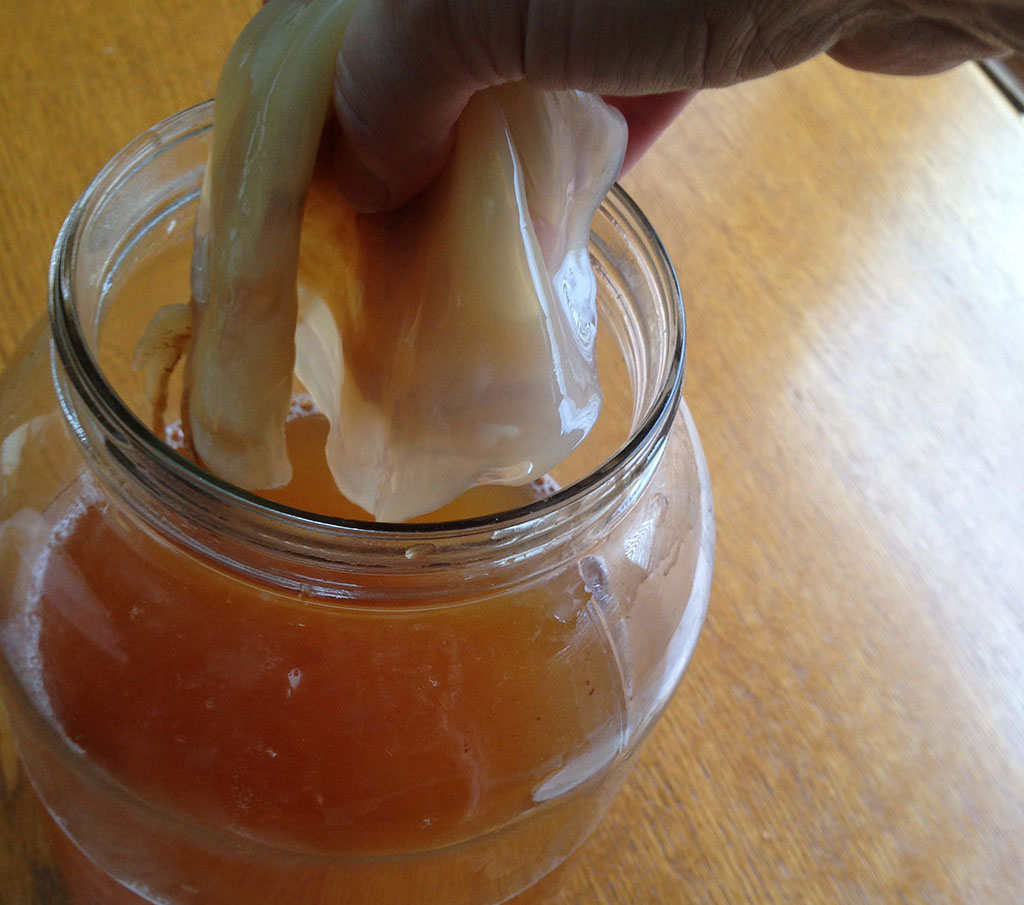
Make Sure Your Kombucha Tea Starter Tea and SCOBY are Healthy.
If you haven't made kombucha regularly and have let the tea and SCOBY sit for months, it might not have the number of bacteria and yeasts it needs to make bubbly kombucha. If there are too many yeasts and not enough bacteria, it won't work properly. So it is best to get a new SCOBY and starter tea. The starter tea has lots of bacteria and yeasts in it, and is just as important as the SCOBY. The only way to know if it will work is to try and make a batch. If it gets bubbly, then you're good to go!
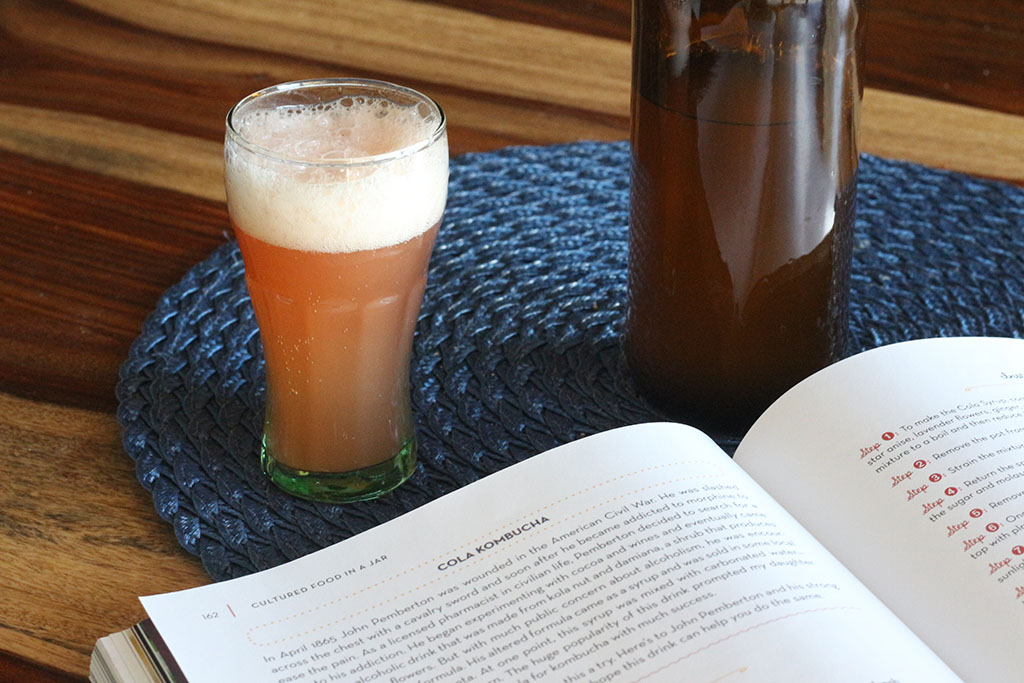
Don’t Let It Get Overly Sour.
Bottle your kombucha tea when it's slightly sweet. It will continue to ferment in the fridge. When it turns too sour, that means the yeasts and bacteria have run out of food and your kombucha will go flat. This is really important in regards to fizzy kombucha. Those microbes need the sugar to consume and make probiotics and lots of carbonation. Remember, the sugar in the tea is for those good bacteria and yeasts and not for you.
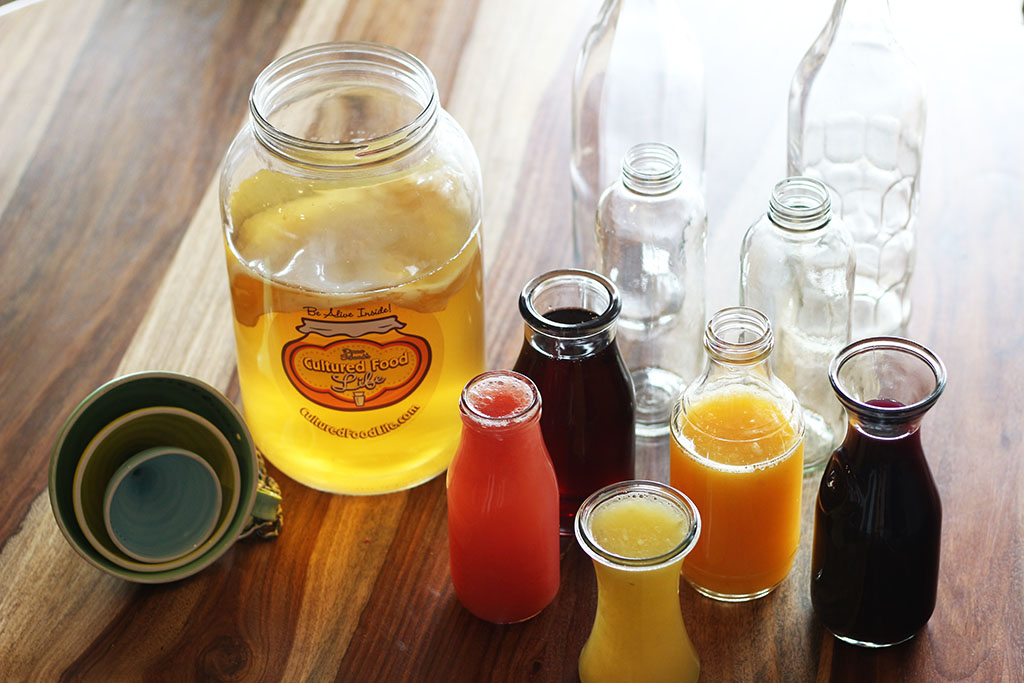
Second Ferment Your Kombucha.
This is a great way to make fizzy kombucha. After your first ferment, you can bottle it with a little fruit juice when it is still just a tiny bit sweet. Add your juice and transfer to airtight bottles. The yeasts will go crazy eating the sugars out of your tea, and will make lots of bubbles. Check out this link for the recipe on how to do this.
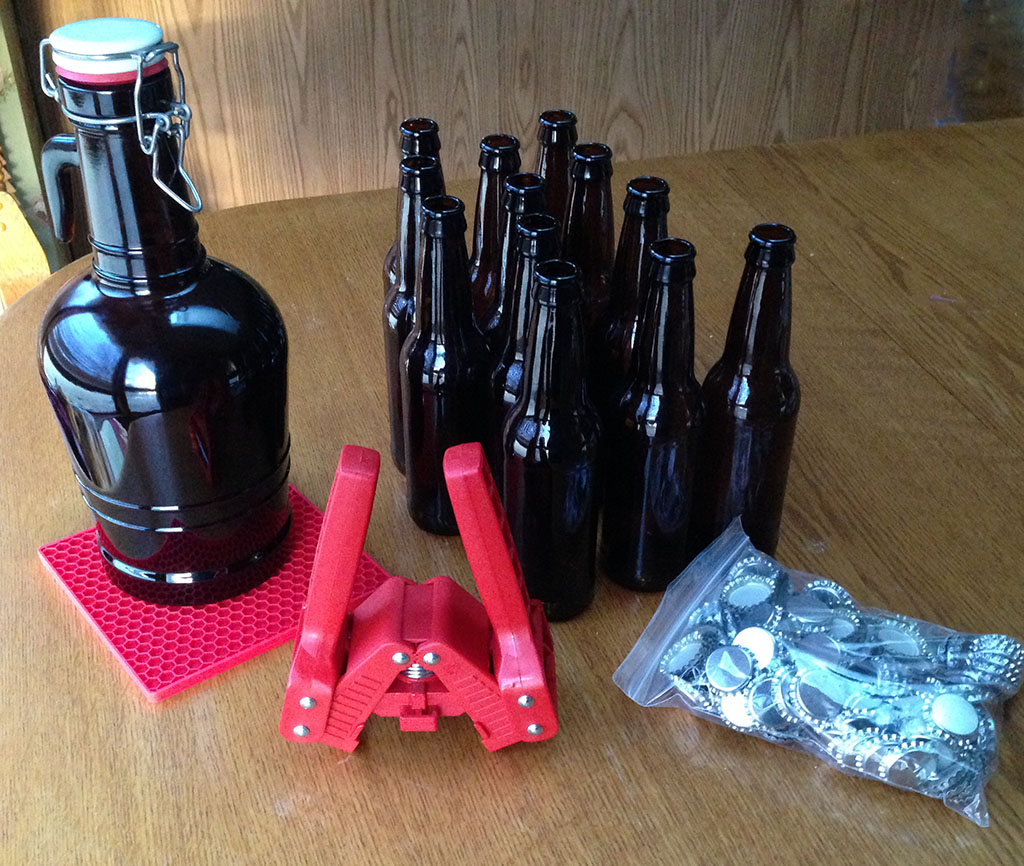
Use Good Bottles!
Use good bottles made for brewing. Clamp down flip top bottles work really well. You can also use old kombucha bottles, they work well too. You want a bottle with a good seal that keeps the carbonation in. You also want to make sure your bottles are made of thick glass and are made for brewing, or else they can build up too much carbonation and explode. If you use a canning jar, you're going to lose a lot of fizz since it doesn't seal the same way a bottle top would. Always fill your bottles up to the top for more fizz. I like to leave a half inch, but some people say they're more successful if they fill it up to the top and remove all the oxygen.

Temperature Helps Determines How Quickly It Brews
Temperature is a huge factor in the timing of when your brew will be done. If your home is 75 degrees or above, it can take one to three days, or slightly longer. Cooler homes can take longer, and warmer temps will brew it even faster. It also depends on how sweet your tea is, but the warmer the temps are, the faster it will brew. You'll need to check it every day to make sure the bottles don't explode. Open the bottles and if they start to fizz out, that means they're done. Then you place the bottles in the fridge to slow down the fermentation process. Patience is a virtue!
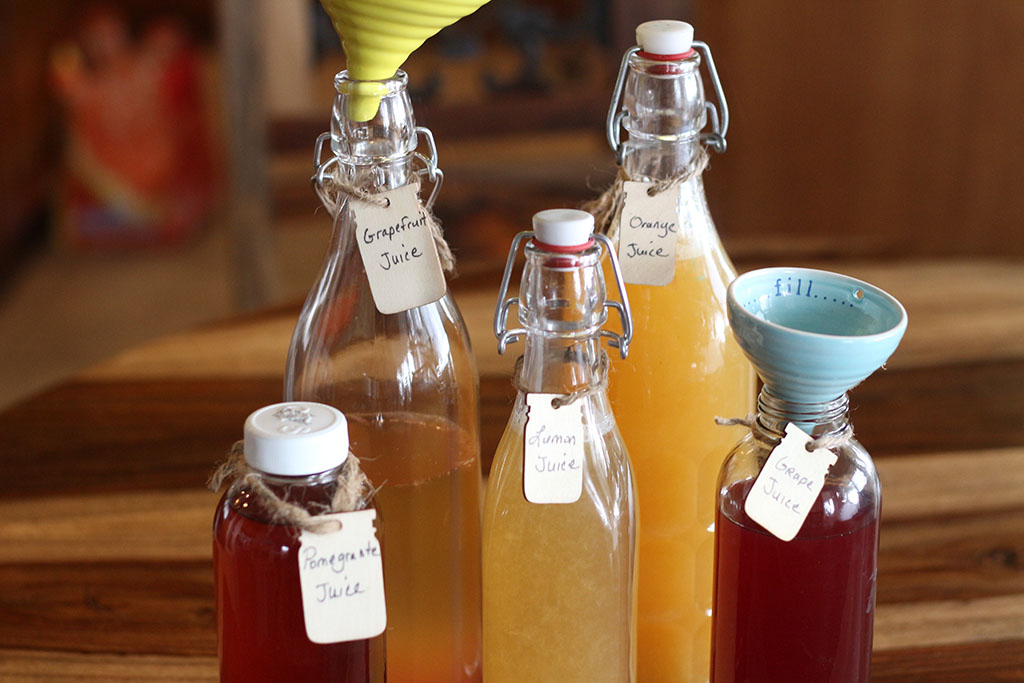
How to Tell When Your Bottles are Done
If you open a bottle and it fizzes out, it's done. However, if it's been fermenting for a while, then you'll need to taste it to see how it's doing. If it's sweet, that means the good bacteria and yeasts haven't eaten all the sugar out of it and you need to let it keep fermenting. If it tastes tart and not sweet at all, and isn't fizzy, it's probably already started to turn into vinegar and is past the point of saving. You either bottled it when it was too tart and didn't have enough sugars to let the bacteria and yeast have enough food to eat, or your starter tea and SCOBY weren’t strong enough to begin with, so you’ll need a new one.
Listen To My Podcast
Bubbly, fizzy kombucha is one of my favorite things. Understanding the science behind how it works can help you create the carbonation that most people are looking for.
Tune in to learn more.
References I talked about:
Are you on the list?
Sign up today and I'll send you my free Getting Started Guide!
Each week I'll send you updates, tips, recipes, and more! You might even be a winner of my weekly giveaway! (starter cultures, memberships, and more!)
Come be a part of my cultured food family!


